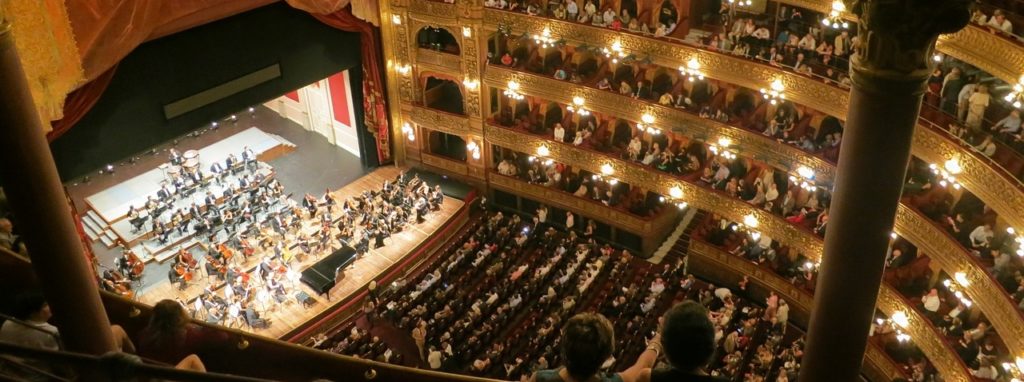
This Week’s Insights: The myth of arts-for-all… Could we bring America together with orchestras?… TV is still Americans’ primary source of entertainment… The limits of crowdfunding… Why are audiences so thoughtless?
- The Arts Are For Everybody? The idea that there’s a “general” audience for the arts is a myth, says playwright Alana Valentine:
“Are we not part of a generation whose success has been to interrogate all forms of generalisation? So why do we continue to refer to a general audience? And please, I’m not taking issue with the nature of the adjective as a collective descriptor, I’m actually leaning into the definition of general as imprecise, inexact, sweeping, and vague. I’m questioning what it is that we’re referring to as general.” And yet, “arts for all” is something of a rallying cry for the arts sector. There’s an argument to be made that something for “all” is actually something for no one, that being generic means that you satisfy no one. Perhaps more important: if we take a generic approach, then debates about issues such as equity and diversity can be skewed. - What Could Bring Us Together? Religion? (No) How About Orchestras? Joseph Horowitz: “As a secular American living in Manhattan, I’m a stranger to the world of church and picnics. I worry that religion may be as much divisive as binding in America’s map of red versus blue. My professional world is one of orchestras (with which I work) and cultural history (about which I write). My perspective suggests another opportunity for healing—regaining a lost “sense of place” and shared American identity via our history and culture. And, yes, I mean high culture.”
- Meeting America’s Audiences Where They Are: Where that is is in front of the TV. When Nielsen started measuring TV viewership, American households were averaging four and a half hours a day. This figure rose steadily over the course of the century, but the biggest jump came in the 2000s, when it peaked at almost nine hours. Now it’s a little under eight. Like it or not – everything else in American life is competing with television.
- Crowdfunding Meets Its Match: One of the most popular shows in the museum world is Yayoi Kusama’s infinity room. Everywhere it has opened, the crowds have been huge. So the Art Gallery of Ontario thought it would be a no-brainer to crowdfund for its own property. Unfortunately the museum raised only $651,183, about half the cost. Having announced the project, however, the museum says it will pay for the rest out of other sources.
- Atrocious Audience Behavior, Chapter 476: Every night there is bad and thoughtless behavior conducted by people who may have spent hundreds of dollars on theater tickets yet seemingly have no idea how to behave in an actual theater. Why should you check that your phone is off, because, gee, that would be way too much trouble. Puleeze, that recorded announcement doesn’t refer to you! An hour later, that ringing sound: Oh, sorry everyone, is that me? Yes, it’s you! Look, you’re in public at the theater! Who knew!

Leave a Reply